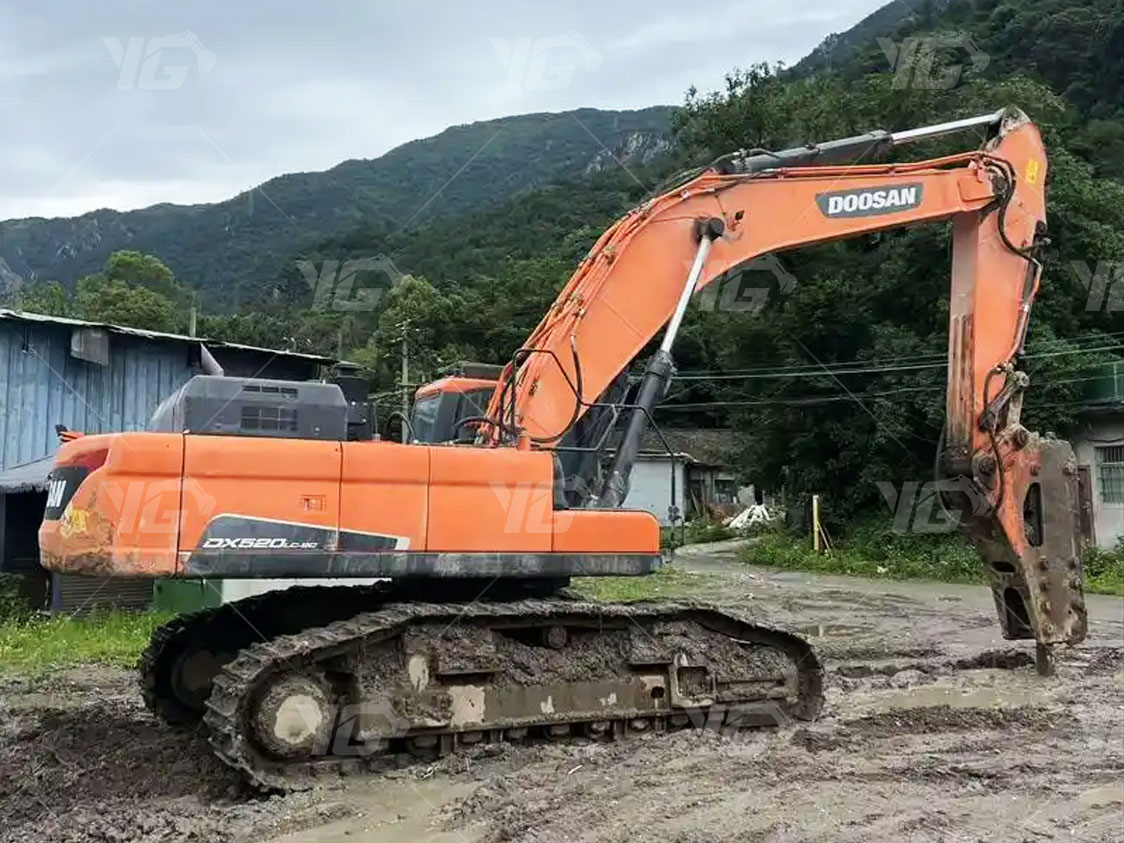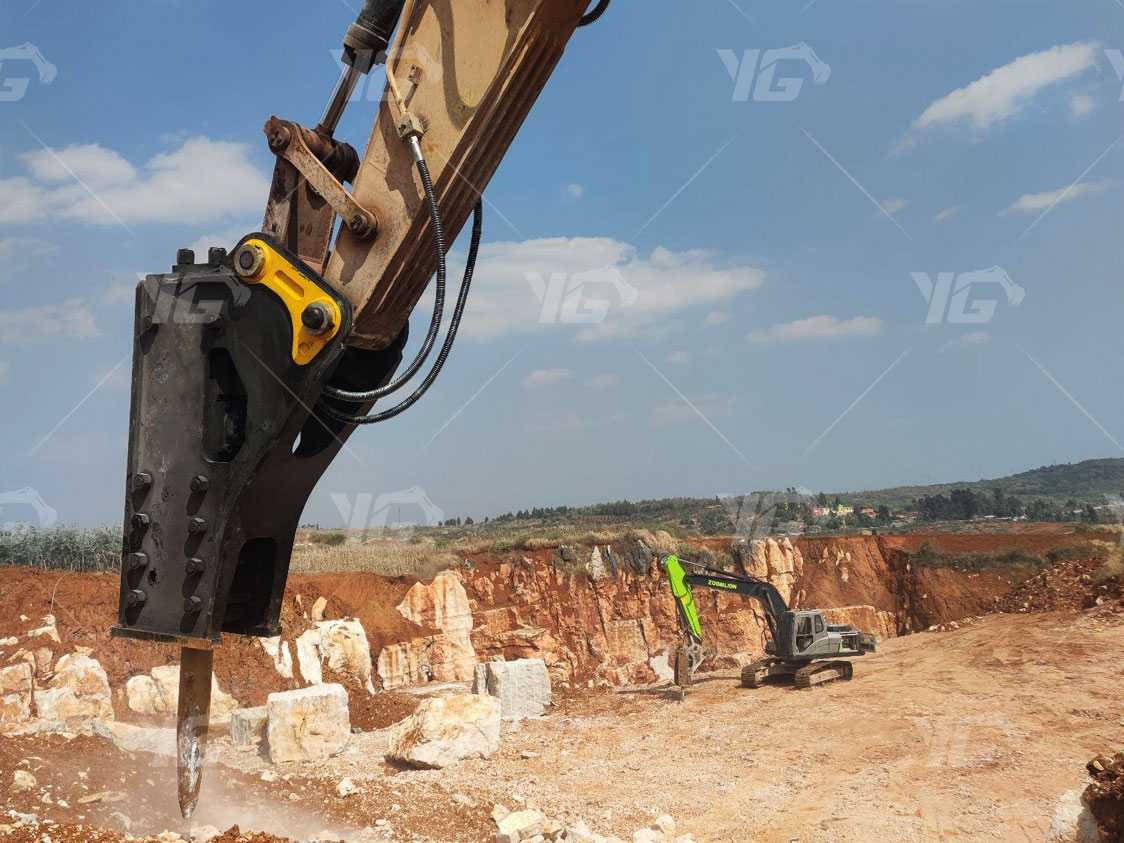Common causes of hydraulic breaker failure are here
The hydraulic breaker is an important accessory of the excavator. It can more effectively break stones and rocks in engineering construction and improve work efficiency. It is widely used in mining, metallurgy, transportation, railways, tunnels and other construction fields. Due to the harsh working environment and improper use, the hydraulic breaker often has adverse symptoms such as decreased striking frequency and decreased force. Let's take a look at the common faults and solutions of hydraulic breaker.

1. Frequency reduction
The main reason for the frequency reduction of the hydraulic breaker is that the pressure or flow of the oil pressure system is insufficient, the drill rod is loose, the hydraulic seal is worn, the hydraulic grease is contaminated, and the safety valve fails.
Solution: Check the oil pump of the hydraulic breaker and adjust the oil pressure and flow that are too high or too low to achieve control of the hammer head; check the hydraulic breaker oil circuit to avoid blockage of the pipeline and affect the impact frequency of the hydraulic breaker; replace worn parts. Tighten the drill rod and fix the drill rod well.
2. Decreased force
The reason for the decrease in force is oil circuit leakage, insufficient stroke of hydraulic breaker control bolts, blockage of hydraulic breaker oil circuit, and excessive oil temperature of hydraulic breaker. These will cause the hydraulic breaker to have reduced impact force, insufficient impact stroke, and reduced overall working performance of the hydraulic breaker.
Solution: Check and adjust the pressure of the hydraulic system and nitrogen. If the parts are not well sealed, grind or replace the components and clean the hydraulic pipeline.
3. Discontinuous action
There are three main situations in which the action continuity is poor. The first is oil circuit blockage, which leads to unsmooth oil supply and the piston cannot obtain stable power. Problems such as insufficient hydraulic system pressure value, wrong direction of reversing valve, stuck piston, and failure of stop valve lead to stagnation of impact. Another problem is that the drill rod is stuck, and the continuity and periodicity of the hydraulic breaker are affected.
Solution: Check the hydraulic oil circuit and clean or replace the blocked parts in time; focus on checking the oil pipe interface, reversing valve direction, stop valve, and piston; check and adjust the state of the drill rod, grind the drill rod with problems with a grinding wheel or oilstone, and add lubricating oil in time.
4. Oil leakage
The main reason for oil leakage is excessive wear of parts such as sealing rings, which leads to poor sealing performance. The oil circuit joint is loose.
Solution: According to the specific location of the oil leakage, replace the corresponding sealing ring and tighten the oil pipe joint.

5. Abnormal vibration of the hydraulic breaker oil pipe
The diaphragm of the accumulator is damaged due to leakage, and the nitrogen pressure of the breaker handle is reduced.
Solution: Check the gas pressure of the accumulator. If the specified pressure cannot be maintained, check whether the diaphragm is damaged. In addition, adjust the nitrogen pressure of the hydraulic breaker to balance it.
The common causes of breaker failure are nothing more than blockage of the hydraulic oil circuit, excessive wear of components such as valve body sealing rings, abnormal oil pressure and air pressure, etc. Since the breaker is composed of a series of precision components, if it is used improperly, it is easy to cause the above failures. Therefore, develop good usage habits in daily use, check and maintain frequently, so as to prevent problems before they happen and avoid unnecessary losses.








